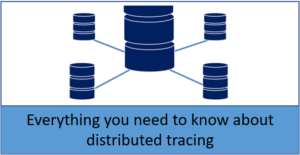Best practices to optimize and enhance log data
Best practices to optimize and enhance log data, such as data compression and log parsing, should be considered effective ways to minimize the mounting costs of monitoring and querying logs.
The massive adoption of cloud, AI, machine learning, social media, and mobile data technologies have led to the increasing volume and variety of log data produced by many organizations today. Since organizations are heavily dependent on their ability to get valuable insights from logs, they must also derive innovative ways to optimize and enhance log data to avoid challenges such as mounting costs of logs storage, manual querying for incident investigation, integration difficulties, and the need for customization. Adopting best practices to optimize and enhance log data is the next best step to take when you have developed your organizations’ logging framework for log management.
The problem of logging cost
Log management has been a standard practice most organizations follow to maintain operational observability. Unfortunately, conventional log management solutions weren’t designed to manage the enormous volume and variety of logs produced daily. For instance, if you run a significant production operation every day, be sure to generate above 100 Gigabytes of logs or more. Not to mention that you are also monitoring logs.
According to a survey by IDC, CIOs have recognized log data cost as their worst nightmare to overcome. Regardless of the massive volume of logs produced, most log data don’t get queried or analyzed yet account for the lion’s share of logging costs. It’s annoying that some enterprises have no choice but to limit relevant logs because of the overwhelming cost of monitoring everything. And because it is volatile, it’s hard to determine the costs from the get-go.
Best practices to optimize and enhance log data
We firmly believe that the future of log optimization and enhancement should have innovative analytics and automated querying and correlation capabilities while leveraging cloud and other log-related technologies in a money-efficient manner.
Best practices to optimize and enhance log data, such as data compression and log parsing, should be considered effective ways to minimize the mounting costs of monitoring and querying logs.
Data Compression
Internet bandwidth is the volume of information that can be transferred over a connection within a period. Bandwidth is crucial because it can determine the amount of log transferred, the transmission time, and projected costs. Since CIOs see log data cost as their worst challenge in production, adopting ways that reduce the log volumes without tampering with the quality of the log is necessary for enterprises today. Many companies have adopted data compression as a unique way to optimize and enhance log data, especially when the log data cost is directly proportional to the volume of network bandwidth consumed.
Transmitting raw logs to the log server from the agent in plain text is inefficient utilization of network bandwidth and limits performance. Data compression assists in reducing the network bandwidth usage; that way, logs transmitted remain the same while lowering transmission and storage size. So the data compression algorithm converts the raw data into a compressed format which is later reinflated when received by the log server.
Data Parsing
Parsing and indexing go hand-in-hand. When log volumes are undoubtedly huge, parsing them is the next best step to having a deeper understanding of where they came from, what occurred and how they can be stored. Parsing is converting logs into data fields that are easier to index, query, and store. The good thing is that most log monitoring solutions have a default setting that allows the tool to parse logs and collect key-value pairs based on standard delimiters such as colon or equal characters.
There are a few critical parsing rules that are pivotal in handling multiline log statements, they include;
- Replace data
- Setting rules to replace content at index time when certain conditions are met.
- Discard data
- Setting rules to discard logs when there’s no more use for the log messages.
Metadata parsing
Parsing can help extract valuable pieces of information from log metadata. For instance, cloud infrastructure can extract default cloud providers’ metatags to provide more context to help enrich the data.
Log transfer reliability
Server connectivity can lead to missing logs which can impact the integrity of the logs. To protect the reliability and integrity of logs, log monitoring solutions should use different unique methods to preserve logs. Some APM solutions use the advanced log transfer protocol (ALTP) to evaluate the data persistence.
Deduplication
Duplicate logs are one of the most complicated tasks with log management. Since logs are transmitted from various network communications, it’s possible to collect duplicates from the various servers in the network. Parsing rules can prevent deduplication of logs which invariably optimize and enhance the quality of the logs.
Conclusion – Best practices to optimize and enhance log data
The volume of logs generated will increase as we continue to see the adoption of cloud, AI, machine learning, social media, and mobile data technologies. Moreover, conventional log management solutions are inefficient in terms of logging costs. To optimize and enhance log data, organizations must find new and innovative methods, such as log compression and log parsing and the enforcement of a log management policy



